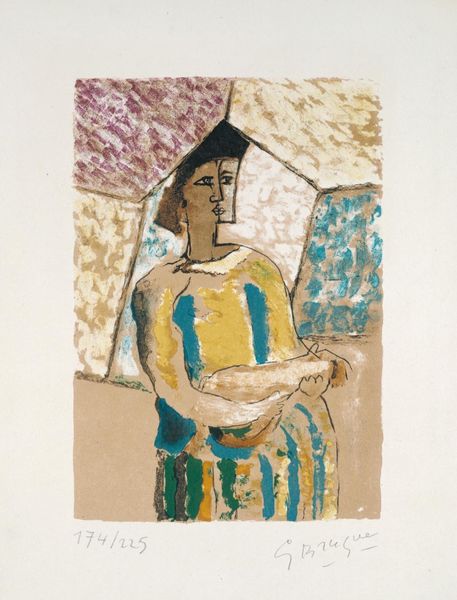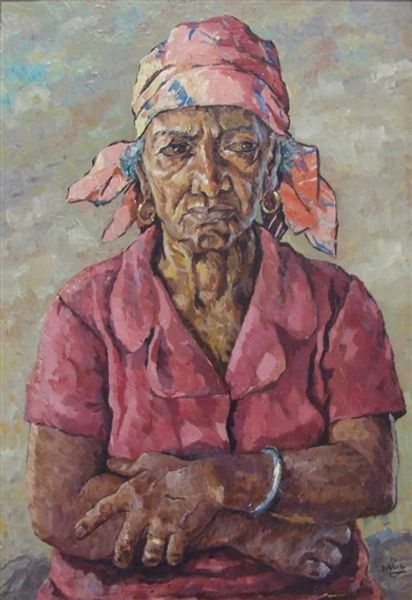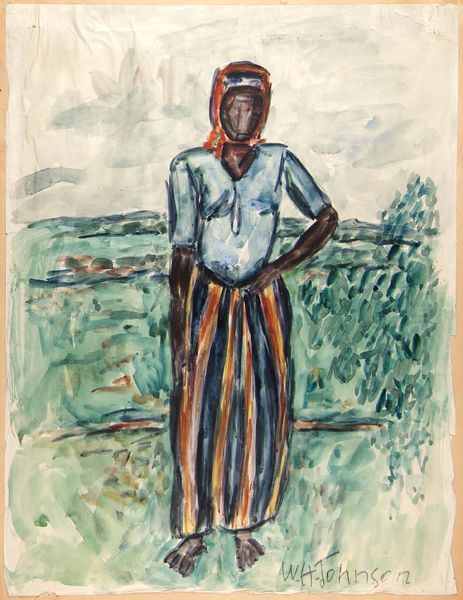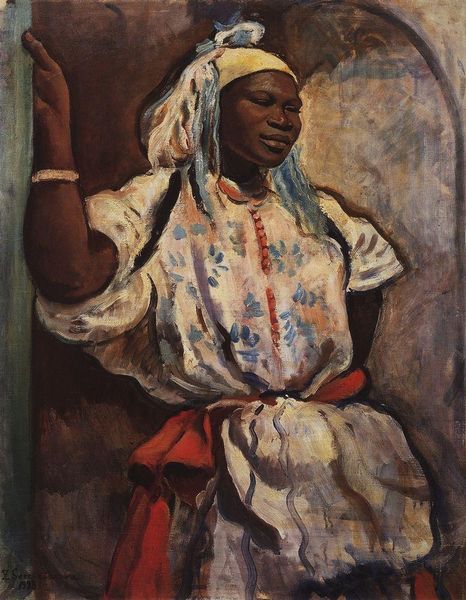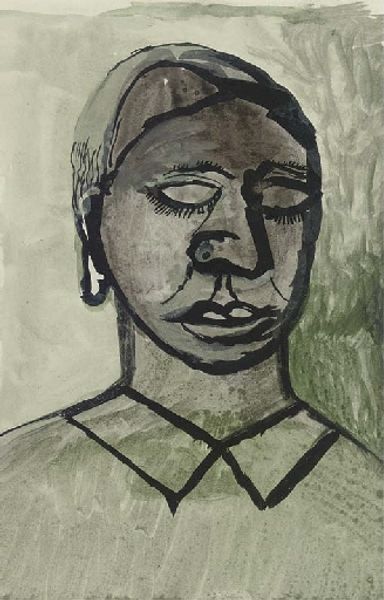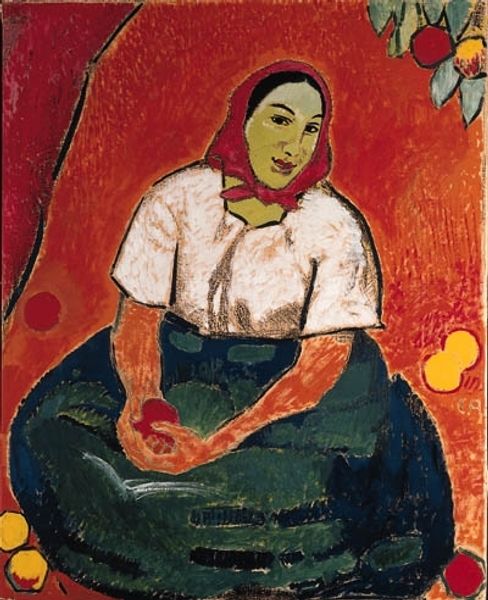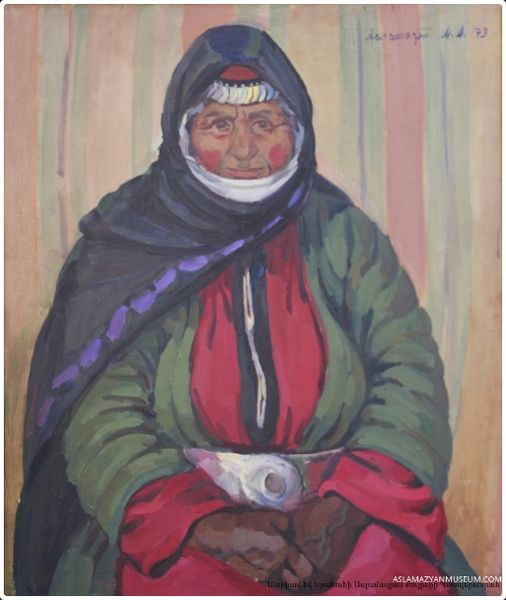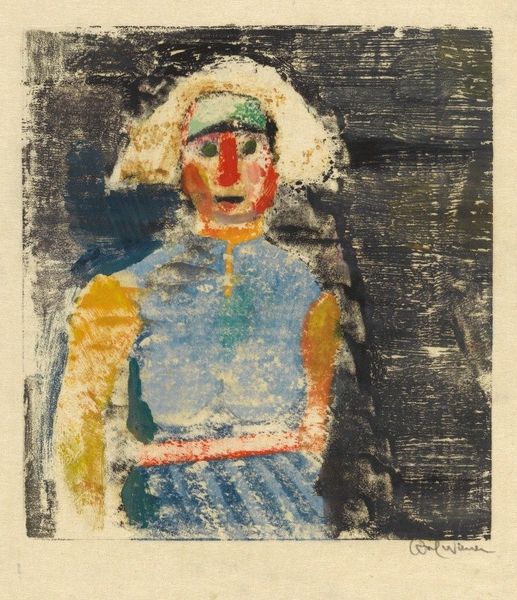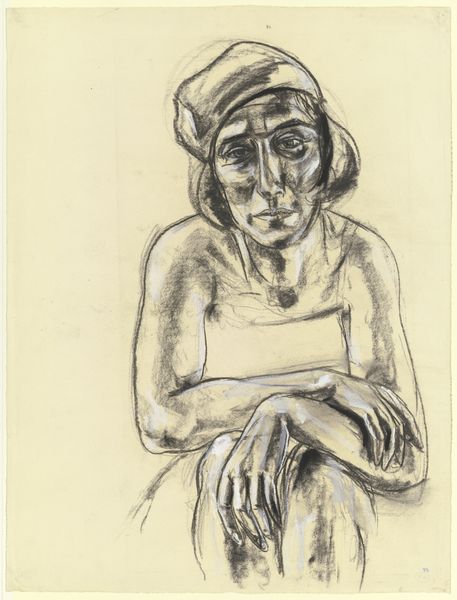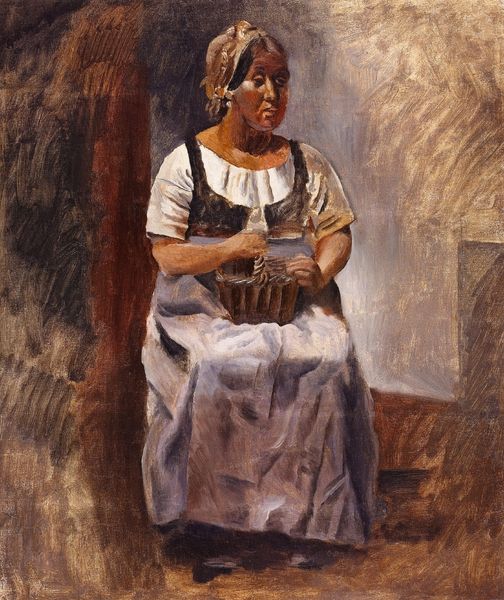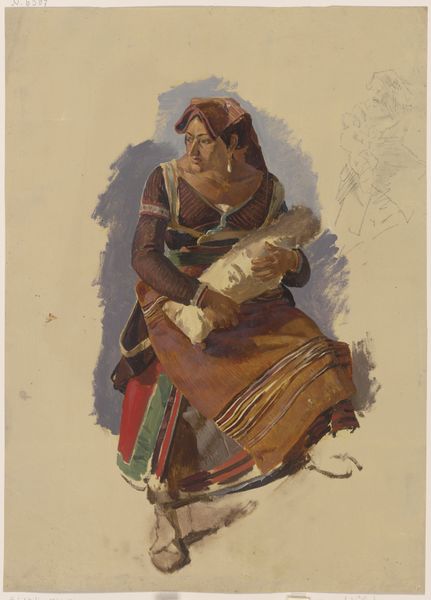
Copyright: William H. Johnson,Fair Use
William H. Johnson made this watercolor painting, Arab Woman, Kairouan, in 1932. In the early 1930s, Johnson traveled through North Africa, and Kairouan is a city in Tunisia. This painting gives us a glimpse into Johnson’s travels and his engagement with cultures outside of the Western art world. The loose brushstrokes and the emphasis on capturing the essence of the subject, rather than a detailed realistic portrayal, is a modernist approach. Johnson also uses bold colors and simplified forms, showing his unique style. It's important to consider how Western artists have historically depicted people from different cultures and the power dynamics involved. How does Johnson's painting contribute to or challenge these representations? As art historians, we can delve into travelogues, colonial archives, and postcolonial studies to gain a better understanding of the complex relationship between the West and North Africa during this period. Through this kind of research, we can better understand the social and institutional contexts that shaped artistic production and interpretation.
Comments
No comments
Be the first to comment and join the conversation on the ultimate creative platform.
